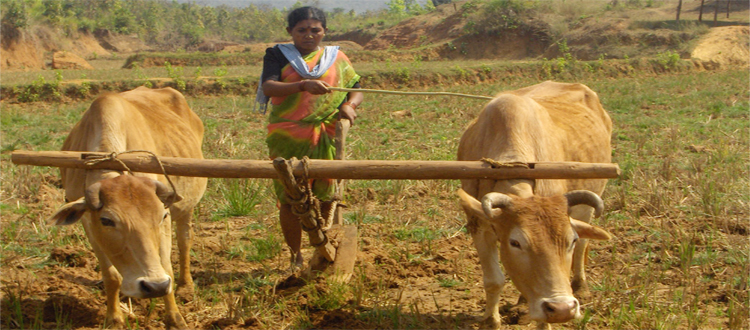UPNRM (Umbrella Program for Natural Resource Management)
Objectives
The objective of the project is to provide regular and consistent income through livestock farming in Thotapalle village and contribute to the sustainable economic development of the model village, in convergence of NABARD's Village Development Plan. The following are the short term and long term goals of the project are as follows:
Short term Goals
- Ensure consistent income of at least Rs3000 per month to each milk farmer covered under the scheme
- Ensure proper animal-care through exposure visits and capacity building programs.
- Ensure good health of animals by providing animal-health care and dairy support services at farmer's door step.
- Enhance productivity of animals through regular supply of good quality feed.
- Ensure good sales price for animal produce by establishing strong market linkages
- Ensure efficient use of by-products of animal rearing by producing biogas, compost etc.
- Mitigate risks in animal husbandry by providing animal insurance.
Long term Goals
- Establish a self-sustaining development model on integrated natural resource management through a model-village so as to replicate in other villages of the country.
- Develop a quality man-power and standard support services for Integrated Natural Resource Management which will help for replication of the model in other villages.
- Promote Environment friendly & sustainable technologies along with their service providers, for propagating INRM models across the district/state.
Project Location
Thotapalle Village is located in South of Garugubilli mandal of Parvatipuram cluster. The village has 262 families constituting 16% SC, 6% ST's and 57% OBC. Agriculture is the primary occupation of this village. Paddy and banana are predominantly grown. The total land in the village is 180 acres of which 57% is wet land and 43% dry land. The small and marginal farmers constitute 80% of the farmers, while 48 families are totally landless and are most vulnerable. About 30 families have livestock of 53 animals producing a meager 51litres per day. The livestock ownership in Thotapalle is just 11% which is very low in comparison with the Vizianagram district average of 79% households owning livestock. The per capita milk availability within the village is abysmally low. This means livestock development in the project area requires large induction of livestock and extensive capacity building of several families who will be newly introduced to commercial livestock farming.




